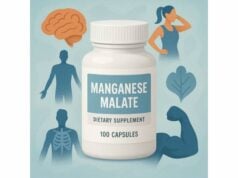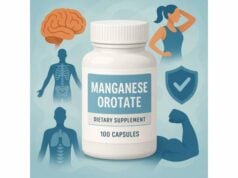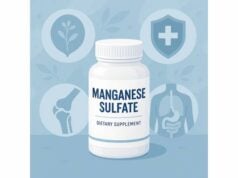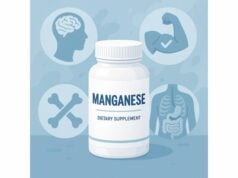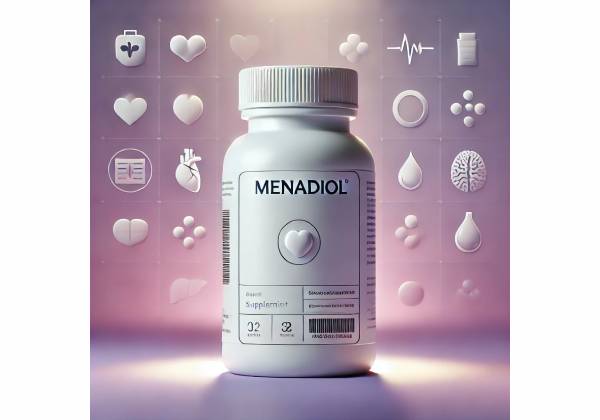
Menadiol is a legacy, water-soluble analogue of vitamin K developed to correct bleeding when fat absorption is impaired. While most people meet their vitamin K needs through food (or use phylloquinone, vitamin K1), menadiol has historically been prescribed when bile flow is reduced or intestinal absorption is unreliable. Because it is water-soluble, it bypasses some of the challenges that affect fat-soluble vitamin K forms. That said, safety concerns—especially in newborns—mean menadiol is used far less often today than vitamin K1. If you have a condition like cholestasis, cystic fibrosis, short-bowel syndrome, or long-term use of certain antibiotics, a clinician may consider it in specific situations. This guide explains how menadiol works, where it may help, how to use it responsibly, realistic dosage ranges, and the side effects and interactions you must know before considering it. You will also find practical alternatives if menadiol is not appropriate for you.
Quick Overview
- Helps restore clotting when vitamin K deficiency coexists with fat malabsorption or reduced bile flow.
- May be considered if standard vitamin K1 cannot be absorbed or is not available in suitable form.
- Typical prescription range: 5–40 mg per day, adjusted by a clinician based on clotting tests.
- Safety caveat: avoid in neonates; risk of hemolytic anemia and jaundice at higher doses or in susceptible groups.
- Avoid if using warfarin without medical supervision; people with G6PD deficiency or severe liver disease should seek specialist advice.
Table of Contents
- What is menadiol and how it works
- Proven and possible benefits
- Who might consider it and when
- How to take menadiol correctly
- Side effects, interactions, and who should avoid
- Evidence check and better alternatives
What is menadiol and how it works
Menadiol is a synthetic analogue of vitamin K. In everyday nutrition, “vitamin K” refers to a family of compounds that share a naphthoquinone core. The two natural forms most people know are phylloquinone (K1), abundant in leafy greens, and menaquinones (K2), produced by bacteria and present in fermented foods and some animal products. Menadiol is different: it is a water-soluble derivative related to menadione (historically labeled K3). Because it is water-soluble, menadiol can be absorbed even when fat absorption is poor—one reason it was developed for use in specific medical settings.
Mechanistically, menadiol supports the same essential “vitamin K cycle” as K1 and K2. In the liver, vitamin K enables an enzyme (gamma-glutamyl carboxylase) to activate several clotting proteins (factors II, VII, IX, X) and the natural anticoagulants protein C and protein S by converting specific glutamate residues to gamma-carboxyglutamate (Gla). Without this step, these proteins cannot bind calcium effectively, and the clotting cascade becomes inefficient. Clinically, that shows up as prolonged prothrombin time (PT) and an elevated INR, with easy bruising, nosebleeds, heavy menstrual bleeding, gum bleeding, or more serious hemorrhage.
Why not simply use vitamin K1 for everyone? In most scenarios, clinicians do. Vitamin K1 (phytonadione) is preferred for reversing deficiency and for managing anticoagulant reversal because it is well-characterized and has an excellent safety profile when used correctly. Menadiol’s niche is narrow: when fat absorption is compromised (e.g., obstructive jaundice, cholestatic liver disease, pancreatic insufficiency, some bariatric surgery states, cystic fibrosis, or short-bowel conditions), its water-solubility can be an advantage. Even so, many guidelines still prioritize K1 (including parenteral routes) and reserve menadiol for specific cases where absorption or availability make it a practical alternative.
A final point about terminology: you may encounter “menadiol sodium phosphate” or “menadiol diphosphate” in older formularies or patient leaflets. These are water-soluble menadiol salts designed for oral use. Because the different salts provide different amounts of “menadiol base,” dosing should always follow the exact product label and your clinician’s instructions rather than a generic vitamin K dose found online.
Proven and possible benefits
1) Correcting coagulation in documented deficiency. The clearest, best-supported benefit of any vitamin K therapy—including menadiol—is normalizing prolonged PT/INR caused by vitamin K deficiency. In adults, clinically meaningful deficiency is uncommon without a precipitating factor: chronic fat malabsorption, prolonged broad-spectrum antibiotics (which reduce intestinal K2 production), very low intake, severe liver disease, or long-term use of certain lipid-binding medications (e.g., bile acid sequestrants). When these factors are present, replenishing vitamin K can restore gamma-carboxylation of clotting factors and reduce bleeding risk. Menadiol can play a role if fat absorption is impaired and oral K1 has not been effective, or when a prescriber prefers a water-soluble formulation for a specific patient.
2) Bridging when bile flow is reduced. Bile acids are needed to absorb fat-soluble vitamins. In cholestasis, obstructive jaundice, or pancreatic insufficiency, K1 absorption may be unpredictable. Menadiol’s water-solubility can help bypass this bottleneck in selected cases. The clinical goal is pragmatic: shorten prolonged INR, stabilize mucosal bleeding, and prevent more serious hemorrhage while the underlying condition is treated.
3) Convenience in certain outpatient settings. Historically, menadiol tablets provided a practical option when parenteral K1 was not available or acceptable, especially for patients with malabsorption who still preferred an oral regimen. Today, more centers can provide oral or injectable K1 and monitor levels closely, so menadiol is less frequently used. Still, some clinicians keep it in the toolkit for very specific scenarios.
4) Not a general “bone” or “cardiovascular” supplement. Vitamin K is involved in activation of proteins like osteocalcin (bone) and matrix Gla-protein (vascular calcification control). However, most research on extra-hepatic effects uses K1 or long-chain K2 (often MK-7 or pharmacologic MK-4), not menadiol. If your goal is to support bone health or discuss vascular calcification, menadiol is not the evidence-based choice. Consult your clinician about dietary K1/K2 or targeted K2 forms if they are appropriate for you.
5) Not appropriate for newborn prophylaxis. In neonates, the standard of care is vitamin K1. Menadiol and menadione analogues have been associated with hemolytic anemia and severe jaundice in infants; they are avoided in this group. If you are pregnant, planning delivery, or caring for a newborn, discuss vitamin K1 prophylaxis with your care team—menadiol is not used for this purpose.
The overarching theme: menadiol is a specialized option for correcting coagulation when deficiency coexists with poor fat absorption. It is not a general wellness supplement, nor is it a first-line therapy in most modern protocols.
Who might consider it and when
Menadiol should only be considered after a clinician documents or strongly suspects vitamin K deficiency and determines that a water-soluble formulation is preferable. Typical scenarios include:
- Fat-malabsorption disorders. Cystic fibrosis with pancreatic insufficiency, cholestatic liver disease (e.g., primary sclerosing cholangitis), biliary obstruction, chronic pancreatitis, short-bowel syndrome, or certain bariatric surgeries can all blunt absorption of fat-soluble vitamins. In these settings, vitamin K1 may still work—sometimes via parenteral routes—but a prescriber may opt for menadiol when an oral water-soluble option is desired.
- Prolonged broad-spectrum antibiotics. Weeks of therapy can depress gut bacterial synthesis of K2, and some cephalosporins may directly interfere with the vitamin K cycle. If bleeding indices are abnormal and diet is inadequate, clinicians may prescribe vitamin K. Menadiol is one option when fat absorption is concurrently limited; otherwise K1 is typical.
- Long-term use of bile acid sequestrants. Agents like cholestyramine can reduce absorption of fat-soluble vitamins, particularly with higher doses or multi-year therapy. Monitoring and, if needed, supplementation may be appropriate. Menadiol’s role remains conditional; parenteral or oral K1 is common.
- Dietary restriction plus comorbid illness. Severe malnutrition, very low-fat diets, or prolonged parenteral nutrition without adequate vitamin K can precipitate deficiency. Modern nutrition protocols routinely add K1; menadiol is considered if additional constraints apply.
Who should not consider it?
- Newborns and young infants. Menadiol is avoided because of risks of hemolytic anemia, jaundice, and potential kernicterus. Vitamin K1 is the standard neonatal prophylaxis and treatment.
- People on warfarin (or similar coumarin anticoagulants) without medical supervision. Any vitamin K supplement can counteract these medications. If you use warfarin, supplementation decisions—including form, dose, and timing—must be coordinated with your prescriber, with INR monitoring.
- Possible G6PD deficiency or history of hemolysis. Because hemolytic anemia has been reported with menadione-related compounds in infants and vulnerable patients, anyone with known red-cell vulnerabilities should consult a hematology professional before use.
- Uncertain diagnosis. If easy bruising or bleeding occurs, do not self-treat with menadiol. The causes of bleeding are varied; some require urgent care.
In short, menadiol is not a “just in case” supplement. It is a prescription-directed option for targeted correction of deficiency when other approaches are impractical or ineffective.
How to take menadiol correctly
Work from lab results and a diagnosis, not guesswork. A clinician typically confirms deficiency using coagulation tests (e.g., PT/INR) and clinical context. In many cases, they will still choose vitamin K1 first (oral or parenteral). Menadiol becomes relevant when a water-soluble oral agent is preferred or required.
Typical prescription range. Product information for menadiol sodium phosphate tablets historically lists adult dosing from 5–40 mg per day, titrated to normalize clotting times. Some patient leaflets describe “1–4 tablets daily,” but the exact milligram strength per tablet depends on the product. Do not extrapolate between brands or salts; follow your prescriber’s instructions.
Onset and monitoring. Menadiol’s onset may take about 24 hours to show a measurable effect on clotting profiles, with benefits persisting for several days after adequate loading. During treatment, clinicians often recheck PT/INR (and sometimes specific factor activity) to confirm correction and avoid overshooting, especially if there is coexisting liver disease. If you are also receiving parenteral nutrition or bile acid sequestrants, expect periodic monitoring.
With or without food? Because menadiol is water-soluble, it is less dependent on dietary fat for absorption than K1. Nonetheless, many clinicians advise a consistent dosing routine (same time each day) with a glass of water. If you experience gastrointestinal upset, report it; alternative forms or routes may be considered.
What if you miss a dose? Do not double up without guidance. For patients being monitored for bleeding risk, an extra dose may push levels higher than needed. If you miss a dose, contact your prescriber—especially if you notice abnormal bruising or bleeding.
How long should you take it? Duration depends on the cause of deficiency. If the underlying issue is temporary (e.g., a course of antibiotics), therapy may be short. In chronic malabsorption, longer courses with periodic reassessment are common. The aim is to use the lowest effective dose for the shortest necessary duration, then reassess whether K1 (dietary or supplemental) can maintain status.
Combination with other nutrients. There is no routine need to pair menadiol with other supplements. Large doses of vitamin E may, in some contexts, antagonize vitamin K-dependent clotting; do not change your vitamin E intake during therapy without discussing it with your clinician.
Storage and product clarity. Use only products dispensed by a licensed pharmacy. Check the exact salt (e.g., “menadiol sodium phosphate”) and the milligram strength on the label. Do not substitute a different “vitamin K” product without prescriber approval; K1, K2, and menadiol are not interchangeable one-to-one.
Special groups.
- Pregnancy and lactation: decisions are individualized. Since neonatal safety is paramount and K1 is the standard in newborns, clinicians usually prefer K1 in pregnant people if supplementation is needed.
- Older adults and liver disease: start low, go slow, and monitor clotting and liver function if indicated.
- Pediatrics: menadiol is generally avoided; pediatric teams rely on K1 with weight-based dosing.
The most important rule: menadiol is not for casual use. It belongs in a monitored plan with defined goals and lab follow-up.
Side effects, interactions, and who should avoid
Common and manageable effects. Most adults who use menadiol under medical supervision tolerate it, especially at conservative doses. Mild gastrointestinal discomfort can occur. Because the medication’s intent is to correct abnormal bleeding, noticeable bleeding events usually reflect underlying illness or insufficient dosing rather than the medicine itself—report these immediately.
Serious adverse effects to know.
- Hemolytic anemia and jaundice: These have been associated with menadione-related compounds, particularly in newborns and in vulnerable patients. The risk is one reason menadiol is avoided in neonates and used cautiously elsewhere. Symptoms include fatigue, pallor, yellowing of skin or eyes, dark urine, or shortness of breath—seek urgent care.
- Kernicterus risk in infants: Severe jaundice in newborns can cause bilirubin-related brain injury. Menadiol is not used for neonatal prophylaxis or treatment; K1 is standard.
- Allergic reactions: Rare, but any rash, facial swelling, wheezing, or severe dizziness requires immediate medical attention.
Drug interactions.
- Warfarin and related anticoagulants: Any vitamin K form can reduce their anticoagulant effect. If you are on warfarin (or phenprocoumon, acenocoumarol), do not start or stop menadiol without your prescriber. Expect INR checks and possible dose adjustments.
- Broad-spectrum antibiotics (especially some cephalosporins): These can lower vitamin K status; your clinician may coordinate timing and monitoring.
- Bile acid sequestrants (cholestyramine, colestipol): These agents interfere with fat-soluble vitamin absorption (relevant if switching to K1 later). Menadiol is less affected but overall vitamin management should be coordinated.
- Large shifts in vitamin E intake: Very high vitamin E may antagonize the vitamin K-dependent clotting pathway; keep intake stable and discuss any changes.
Who should avoid menadiol or use extreme caution.
- Newborns and infants: Menadiol is contraindicated; K1 is used instead.
- Unsupervised anticoagulant users: If you take warfarin or similar drugs, any vitamin K supplement must be coordinated by your prescriber.
- Known G6PD deficiency or hemolysis history: Discuss risks with a hematology specialist.
- Severe liver disease: Because both vitamin K metabolism and clotting factor synthesis occur in the liver, dosing and expectations are different—specialist care is recommended.
- Unknown cause of bleeding: Do not self-treat bleeding or easy bruising with menadiol. Seek evaluation.
Signs you should stop and call your clinician. Any new or worsening jaundice, dark urine, unexplained fatigue, shortness of breath, rapidly spreading bruises, black stools, severe headache, or neurological symptoms.
The bottom line: used selectively and monitored, menadiol can normalize clotting in hard-to-absorb situations. Used casually or in the wrong person, it can be unsafe.
Evidence check and better alternatives
Where menadiol fits in today. Modern nutrition and hematology guidelines center vitamin K1 (phytonadione) for prevention and treatment of deficiency, as well as for coumarin anticoagulant reversal. K1’s safety in adults, pregnant people (when indicated), and newborns is well established when used appropriately, with clear dosing and monitoring frameworks. Menadiol remains a niche option when a clinician wants a water-soluble oral agent in the context of malabsorption and expects reliable correction of prolonged PT/INR under supervision.
Strength of evidence.
- Coagulation correction: High certainty that repleting vitamin K (by any effective form) corrects deficiency-related coagulopathy. Menadiol works through the same biochemical pathway.
- Malabsorption advantage: Biologically plausible and supported by longstanding clinical practice notes: menadiol can be absorbed without bile-mediated micelle formation. Many centers still prefer parenteral K1 when malabsorption is severe because it offers dose control and rapid onset.
- Non-hepatic outcomes (bone, vascular): Evidence mainly involves K1 and K2. If your goal is bone support or potential vascular benefits, menadiol is not the studied form. Discuss dietary K1/K2 or specific K2 preparations if your clinician believes they are appropriate.
Alternatives and when to use them.
- Vitamin K1 (phytonadione): First-line for nearly all deficiency states; available oral and injectable. In neonatal prophylaxis and treatment, K1 is standard of care. For patients on warfarin, clinicians use K1 to adjust INR in carefully defined circumstances.
- Dietary strategies: For mild, diet-related deficiency without malabsorption, increasing leafy greens and other K-rich foods can help; consistency is crucial if you take warfarin.
- Parenteral routes: In marked malabsorption or urgent correction, injectable K1 can be used to bypass the gut entirely, with predictable effect.
Practical pathway to decide.
- Confirm a reason to suspect deficiency (context plus labs).
- Choose K1 first in most cases; decide oral versus parenteral based on severity and absorption.
- Consider menadiol only when a water-soluble oral option fills a specific need and the care team can monitor clotting response.
- Reassess cause and duration regularly; aim for the lowest effective dose and transition to safer, better-studied options when feasible.
Take-home message. Menadiol is effective at fixing a specific biochemical problem—vitamin K-dependent under-carboxylation—especially when fat absorption is impaired. It is not a general health supplement, and because of safety considerations (notably in infants), it should be reserved for carefully selected, clinician-supervised cases.
References
- Vitamin K – StatPearls – NCBI Bookshelf 2023 (Review)
- Vitamin K – Health Professional Fact Sheet 2021 (Guideline Overview)
- Vitamin K Toxicity 2024 (Clinical Reference)
- Vitamin K – sources, physiological role, kinetics, deficiency, detection, therapeutic use, and toxicity 2022 (Systematic Review)
- Menadiol sodium phosphate tablets 2024 (Patient Information and Dosing)
Disclaimer
This article is educational and does not replace personalized medical advice, diagnosis, or treatment. Do not start, stop, or change any medication or supplement—including menadiol or other vitamin K forms—without consulting a qualified healthcare professional who can interpret your medical history, lab results, and current medications. If you experience unexplained bruising, bleeding, jaundice, dark urine, severe headache, or neurological symptoms, seek urgent care.
If you found this helpful, please consider sharing it with friends or colleagues on Facebook, X (formerly Twitter), or your preferred platform, and follow us on social media. Your support helps us continue creating clear, trustworthy health content.


